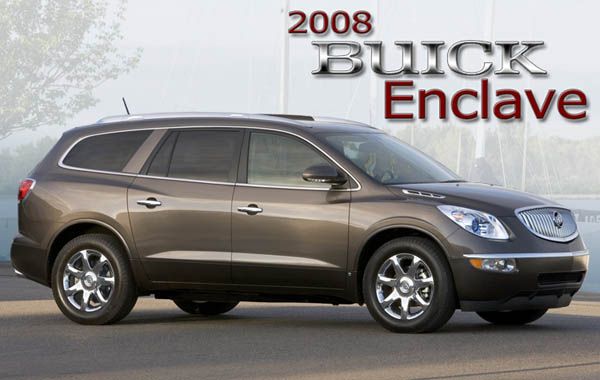The article in the Lansing State Journal reported that the UAW’s members at the Lansing Delta Township assembly plant of General Motors were suspicious. “Is General Motors softening up its hourly workers for a new round of buyouts in order to hire less expensive workers under the new four year contract?” is how the opening line of the story put it.
What provoked this? Simple: GM has announced that it is going to lay off workers at the Lansing Delta Township plant – next May. To the UAW’s members, that makes no sense. That’s the plant that builds the Buick Enclave and the GMC Acadia. According to Automotive News, there is only a 21 day supply of the Enclave and both of these models are in great demand.
The UAW workers are suspicious because they don’t understand why GM would be cutting production of a model that’s a hot seller.
Maybe they ought to read the Wall Street Journal.
The Journal has the answer, under the headline “How GM Handles a Hit: Build Fewer.”
It seems that GM has finally figured out that if you have a hot selling model and then flood the market by overproducing it, you no longer have a hot selling model. Before you know it, you’ve got a model that’s not selling. Then you have to start cutting the price and dumping it on rental fleets. If you have a hot seller and want to keep it hot, keep it in demand by making sure that supply never exceeds demand.
Economics 101, perhaps. But the UAW isn’t used to General Motors taking the long view. In the past, GM figured it was better off building cars than not building them, so long as it covered their marginal costs. Put another way, as long as it could be sold for a price that equaled the parts cost and labor, GM would rather build a car that made no profit than pay the UAW members 90% of their regular pay, under the “jobs bank,” because that expense was a direct loss.
So, is GM’s Enclave strategy original thinking.
No. It is exactly what Toyota’s doing with the Scion. It plans to import fewer Scions in 2008 than it did in 2007. Why? To keep the model “exclusive.” Exclusivity may not seem to be the core concept with a model that sells for less than $25,000 – but the issue for the car company isn’t sales price. It’s profit. The profit in a $25,000 car that sells for sticker because it’s in demand is plenty sufficient, much more than that on a car that costs $10,000 more, but isn’t selling.
Indeed, both Honda and Lexus have pursued precisely the same approach that GM is now taking with the Enclave and Acadia – and they’ve done pretty well with it, too.
The Enclave strategy is more significant at GM, however, than at Toyota or Honda. The reason is cash flow. In the past, GM has needed to generate cash to keep up with its labor costs. As noted above, that’s why it made economic sense in the short-run for them to keep building cars, even though that was detrimental to sales and profit in the long-term. However, the moves the company has made over the past several years have cut their costs, and the new UAW contract will cut them even more, both because it lowers the outright labor cost and because it gives GM more flexibility in making lay-offs needed to tailor supply to demand.
As the Wall Street Journal noted, the big test for GM will come later, after the new car introduction glow has worn off the Cadillac CTS and Chevrolet Malibu. The Malibu, in particular, is a car that GM expects to be a volume seller. But, then, so are Hondas and Toyotas. If GM can keep the supply below the demand when the Malibu has been on the market for a year, they can turn the car into a long-term home run.
The UAW’s rallying call in contract negotiations this year with GM and the other domestic automakers has been “job security.” GM is creating it for them in the production and pricing strategy being pursued with the Enclave and Acadia.
The should be less suspicious when the company tries to create it.

